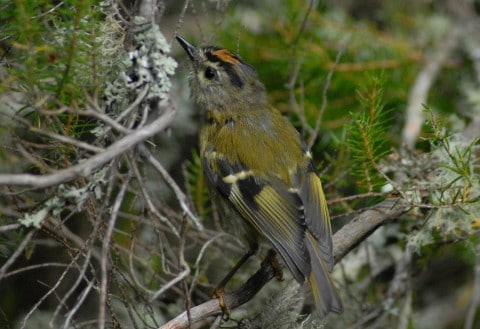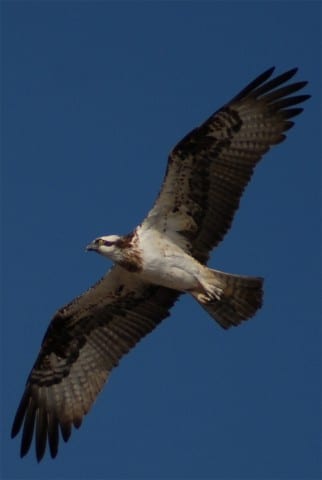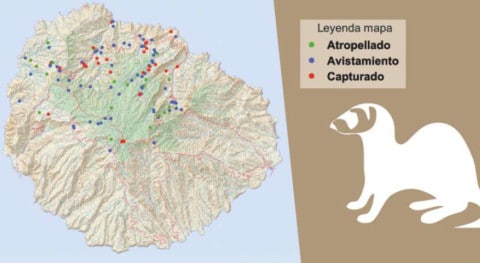Here you will find some important data about all the birdlife of the Canary Islands, which species are present here, what special features apply to them and what conditions they are exposed to.
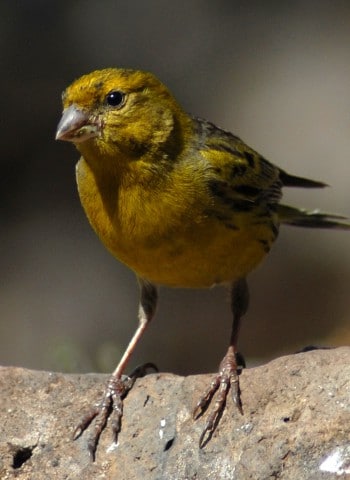
Among the 87 birds nesting in the Canary Islands, there are five endemisms, exclusive species. The Teidefinch (Fringilla teydea), the Canary Islands Chat (Saxicola dacotiae, exclusive to Fuerteventura), Bolle’s Pigeon (Columba bollii) and the Bay Pigeon (C. junoniae).
Three other species are exclusive to the Macaronesian Islands, so they also live in the Azores or Madeira: the Plain Swift (Apus unicolor), the Canary Pipit (Anthus bertheloti), the Common Chiffchaff (Phylloscopus canariensis) and the Canary Island Citril Finch (Serinus canarius). There are also 30 subspecies that are only native to the Canary Islands, some of which are very different from their relatives from mainland Europe.
The blue tits, chaffinches and winter goldcrests that live here are also being discussed to give them their own species. In fact, I once presented a local ornithologist with the photo of the Winter Goldcrest below and he immediately recognised from the bird that I had taken the photo in Madeira.
In addition to these species nesting here, there are 322 species of migratory birds and winter or summer visitors (the approximately 200 pairs of Eleonora’s falcons specialising in catching migratory birds on the eastern islands catch 23000 birds per season according to estimates!)
Most of the migratory birds spend the winter south of the Sahara and pass through the Canary Islands in autumn (between July and October) or spring (end of March to early June). The two eastern islands receive the majority of visitors.
About 28 species regularly come to the Canary Islands to spend the winter here. Colonisation is not complete: Reproduction of the moorhen has taken place for the first time in recent decades, after having been regularly observed here for many years as migratory birds. Others have only begun to do so in recent years. Some by natural means, such as the Ruddy Shelduck, some under the influence of man, such as the parakeets.
Among the extinct species, it is worth mentioning the remains found at Orzola of non-aviable giant birds – possibly related to ostriches or pelicans – whose presence had previously confirmed the theory of a land link between the eastern islands and the continent. There were also two species of shearwater, now extinct, whose consumption by the indigenous population has been confirmed. And remains of white-tailed eagles and petrels have been found, which also no longer occur here. The red kite and the goshawk probably became extinct in the Canary Islands only a few years ago.
Osprey, Stone Curlew, Little Ringed Plover, Common Raven, Desert Bullfinch, Lesser Short-toed Lark and Rock Sparrow are among the most threatened species. For most of them, no official plans have yet been drawn up for their protection, while the Houbara Bustard and Egyptian Griffon can already count on extensive conservation programmes.
Past threats: First and foremost, the collection of eggs and chicks has been the downfall of some species (mainly shearwaters, 6000 – 7000 chicks per year in the 1950s and Houbara Bustard, until 1980).
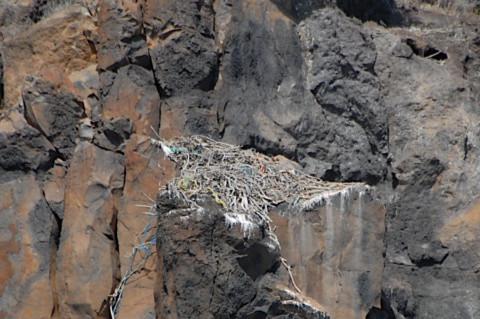
The German scientist Bolle described in 1857 how he collected 400 tern eggs in one hour with two boys on the beach of Maspalomas. At the same time, other people were also searching and only the incomplete clutches with one or two eggs were plundered (perhaps there is a mistake in the tradition: it is more probable that he only relieved the complete clutches by 1 – 2 eggs). Today the total population of terns is limited to about 50 pairs. This gives us an idea of the extent to which the situation in the Canary Islands has changed. The islands must have been much more densely populated with birds at that time.
The main threats were and are:
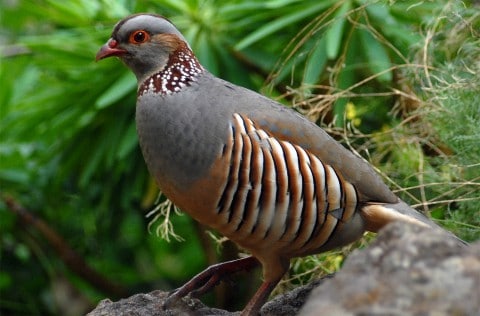
– Catch of species with beautiful song (such as goldfinch, canary canary canary and blackcap)
– excessive hunting of endemic pigeons, quails and rock partridges
– habitat destruction and alteration (destruction of Fuerteventura’s forests have led to the extinction of the laurel pigeon there, destruction of coastal landscapes)
– Hunting of buzzards, ravens and red kites (popular name was chicken thief – today red kites are extinct and ravens are protected)
– excessive use of insecticides (the quantities used here even far exceed the Spanish average)
– the introduction of rats, ferrets and cats (petrels and petrels nest only on small coastal rocks for this reason)
– High-voltage power lines (many birds die from electric shock or collision)
– Harassment by excursionists with four-wheel drive vehicles or hikers during the breeding season
– excessive coastal lighting
– Introduction of foreign bird species


